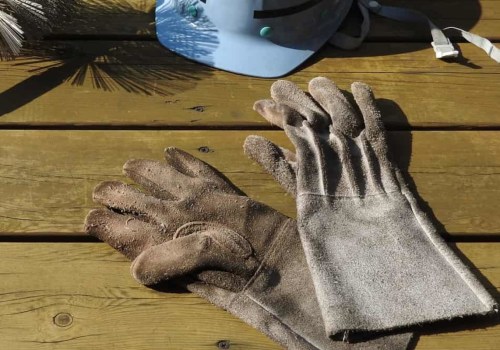Keeping your chimney clean and safe is an essential part of homeownership, especially if you regularly use a fireplace or wood-burning stove. Over time, creosote—a sticky, highly flammable byproduct of burning wood—builds up inside your chimney flue. This residue not only reduces efficiency but poses a serious fire hazard if not properly addressed. Many homeowners assume that chimney maintenance involves a messy, time-consuming process that requires professionals every few months, but one of the simplest and most cost-effective ways to supplement your regular cleanings is by using chimney sweeping logs. These specially formulated logs help loosen and reduce creosote buildup, making it easier to maintain a clean chimney while keeping your home and family safe during the colder months.
How Chimney Sweeping Logs Work
Chimney sweeping logs are designed to be burned just like regular firewood. Once lit, they release a combination of catalytic chemicals that interact with creosote deposits on the interior walls of your chimney. This reaction breaks down the creosote into a flaky, less sticky substance that either falls to the base of the chimney for easy removal or is carried out harmlessly with smoke. The process can significantly reduce the risk of chimney fires when used consistently over the course of a burning season. While they are not a complete replacement for professional inspections and cleanings, sweeping logs serve as an effective in-between solution, especially for those who burn wood regularly and want to maintain a safer chimney environment with minimal effort.
When and How to Use Sweeping Logs
Using chimney sweeping logs is simple and doesn’t require any special equipment or training. It’s recommended to use them every 20 to 30 fires, or once a month during periods of heavy fireplace usage. Most logs come with straightforward instructions: place the log on an active fire or in the fireplace with kindling, light it, and allow it to burn completely. The chemicals will do their job as the log burns, treating the creosote deposits and helping to keep your chimney’s airflow unrestricted. After use, it’s always a good idea to visually inspect the firebox area for fallen debris and ash, and remove any large flakes or buildup that may have accumulated.
Pairing Logs with Regular Maintenance
Although chimney sweeping logs are effective, they should not be considered a total substitute for professional chimney sweeping. Annual inspections by certified chimney sweeps are still necessary to ensure there are no hidden cracks, animal nests, or structural issues that sweeping logs cannot address. A professional will also be able to assess how effective the logs have been and determine if additional measures are needed. That said, combining regular use of sweeping logs with professional service is a proactive and practical approach to chimney care, particularly for busy homeowners who want to stay ahead of maintenance without adding another big task to their to-do list.
A Cleaner Home Starts with Simple Habits
Maintaining a clean and safe chimney has benefits that go beyond fire prevention. Improved airflow leads to better indoor air quality, more efficient heating, and fewer smoke-related issues inside your home. A well-maintained fireplace can also enhance your living space’s overall atmosphere, making those cozy nights by the fire even more enjoyable. Just like hiring maids to keep your home sparkling and fresh, incorporating chimney sweeping logs into your seasonal routine helps ensure your house remains a safe and comfortable environment. The small effort of using a sweeping log pays off in peace of mind and performance, making it a smart addition to your home care habits.
Final Thoughts on Fire Safety and Comfort
Incorporating chimney sweeping logs into your fireplace maintenance routine is a simple, affordable, and effective way to protect your home from preventable chimney fires. They offer a convenient solution for reducing creosote buildup and work best when paired with regular inspections and cleanings by certified professionals. By staying consistent with chimney care, homeowners can enjoy all the warmth and ambiance their fireplace provides—without the worry.






